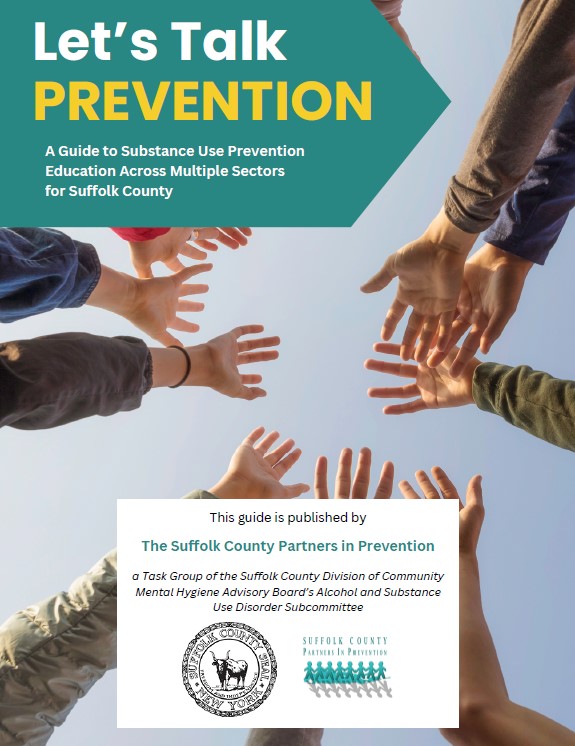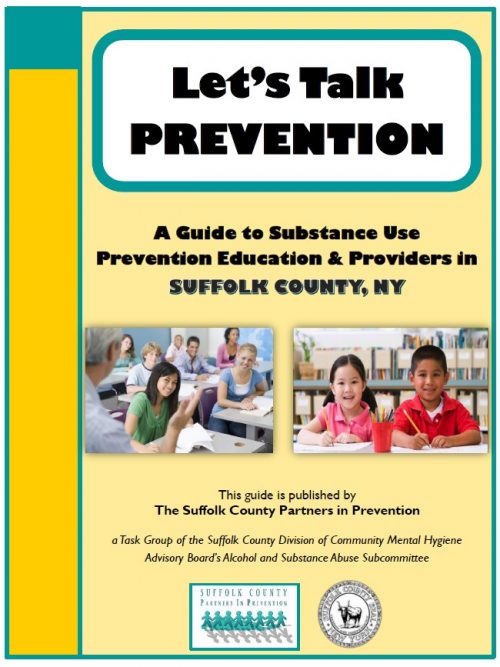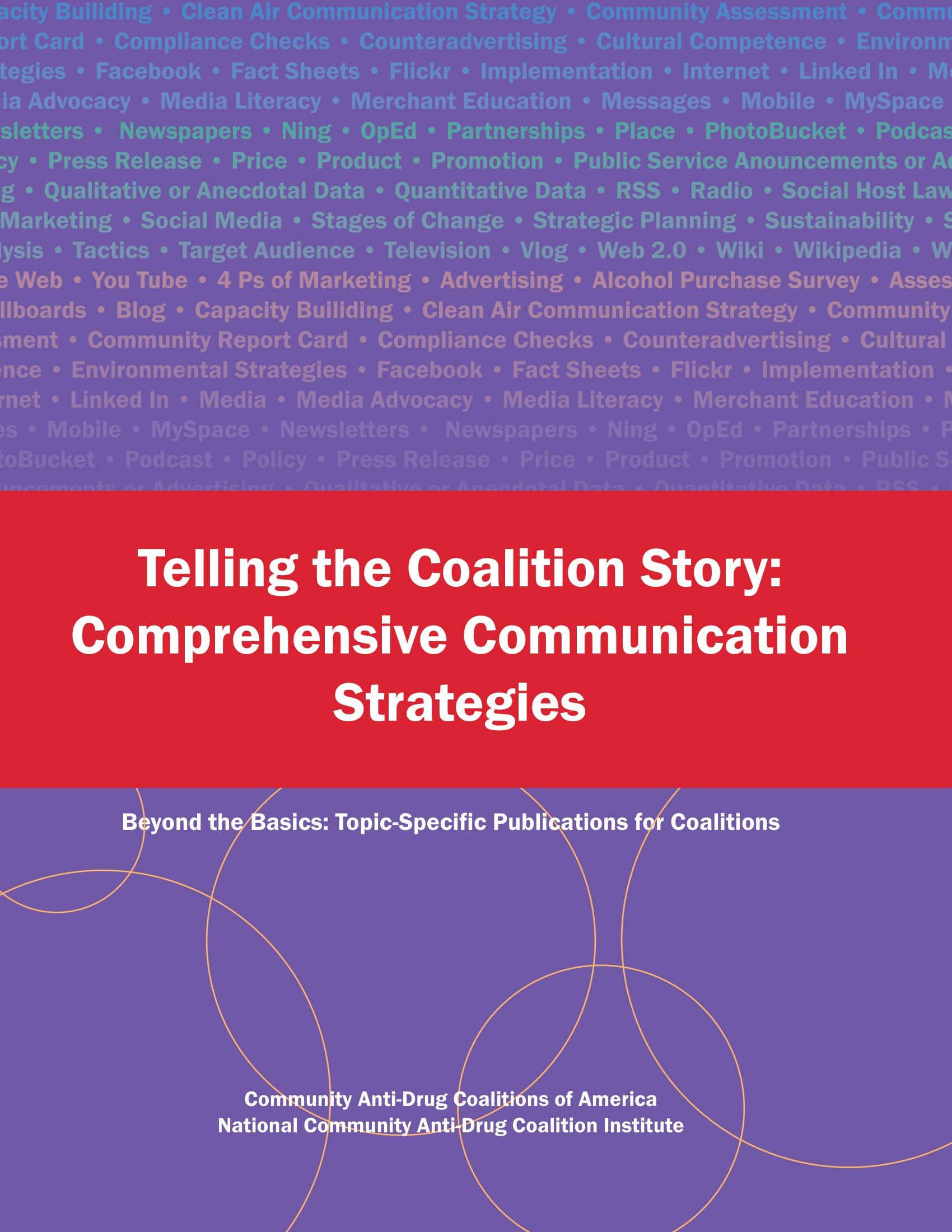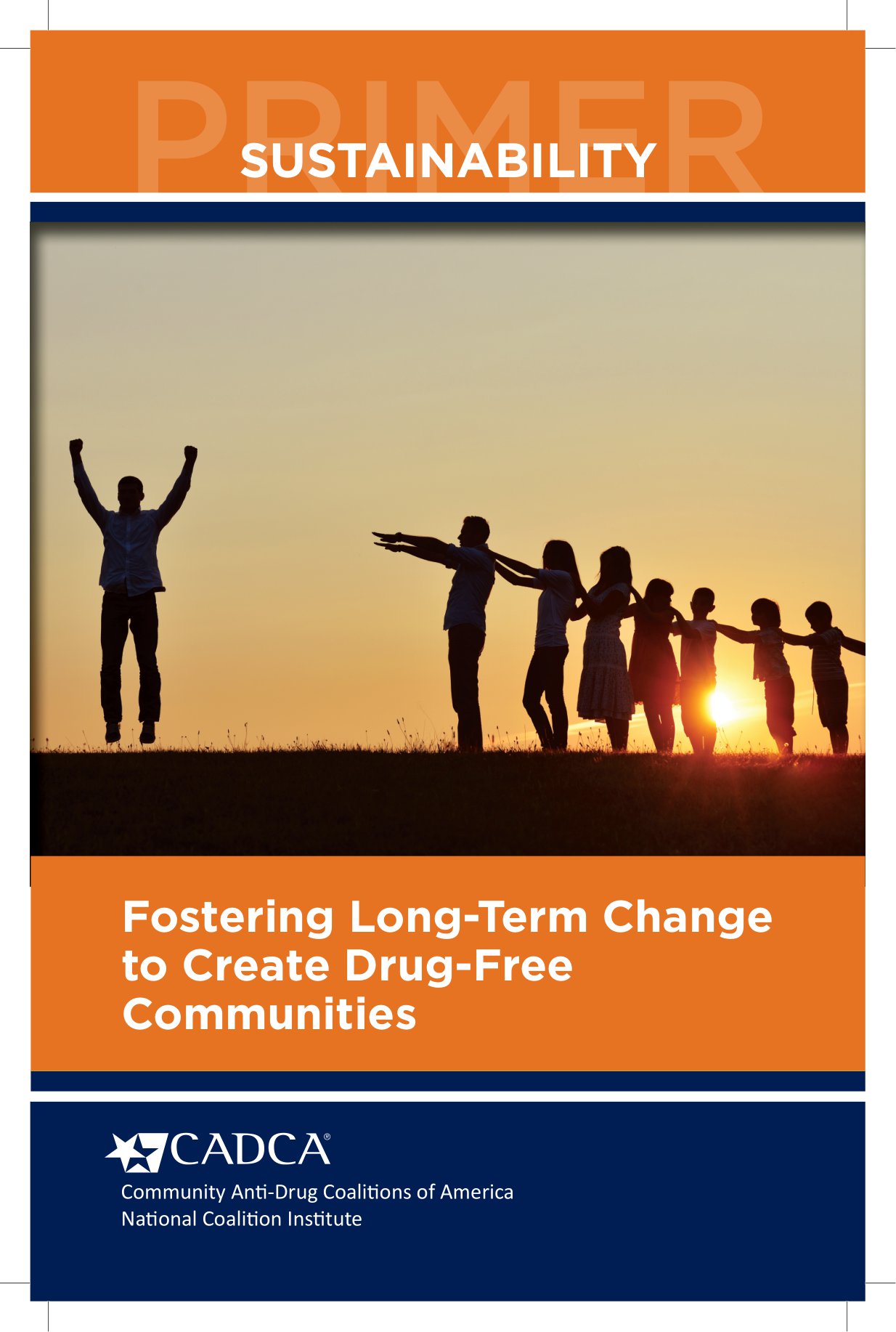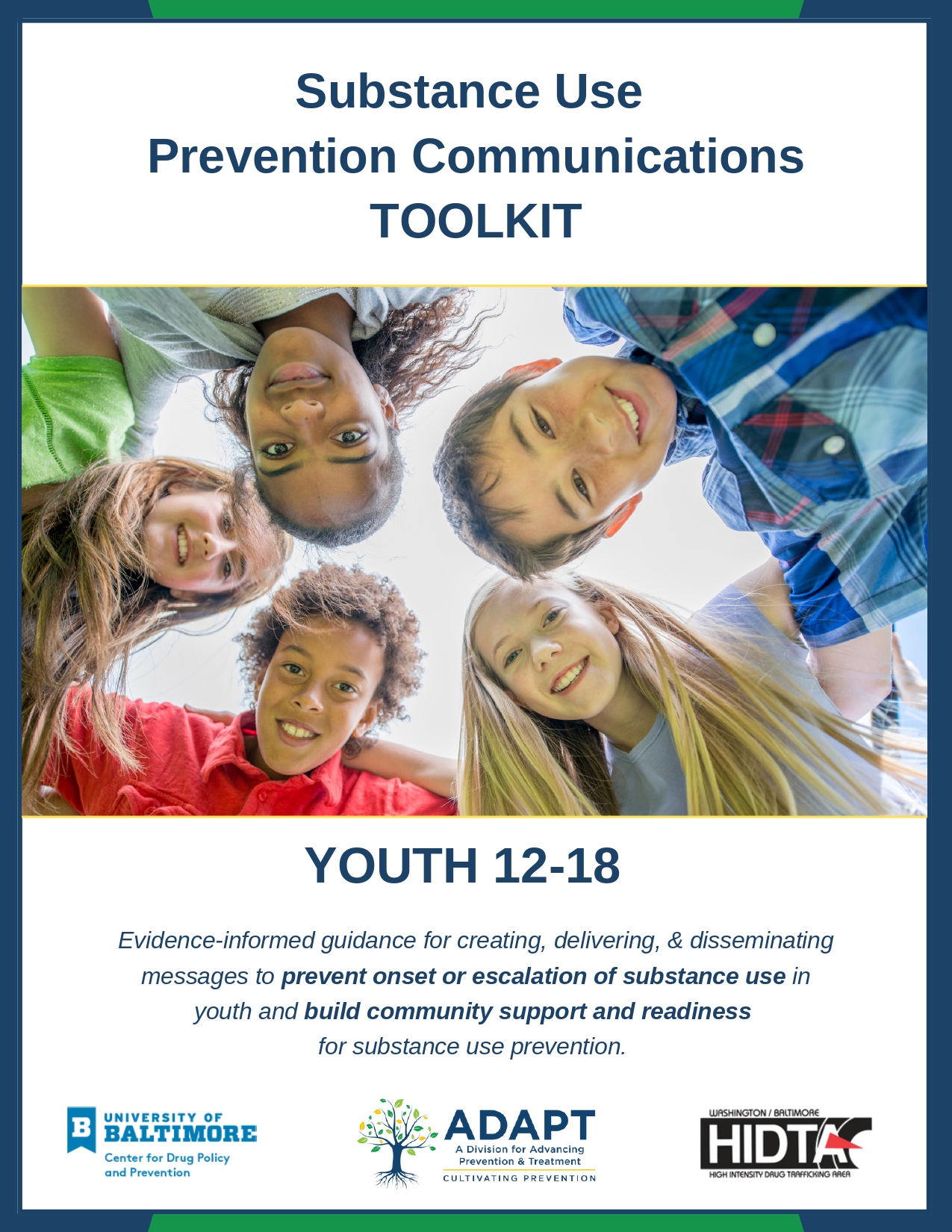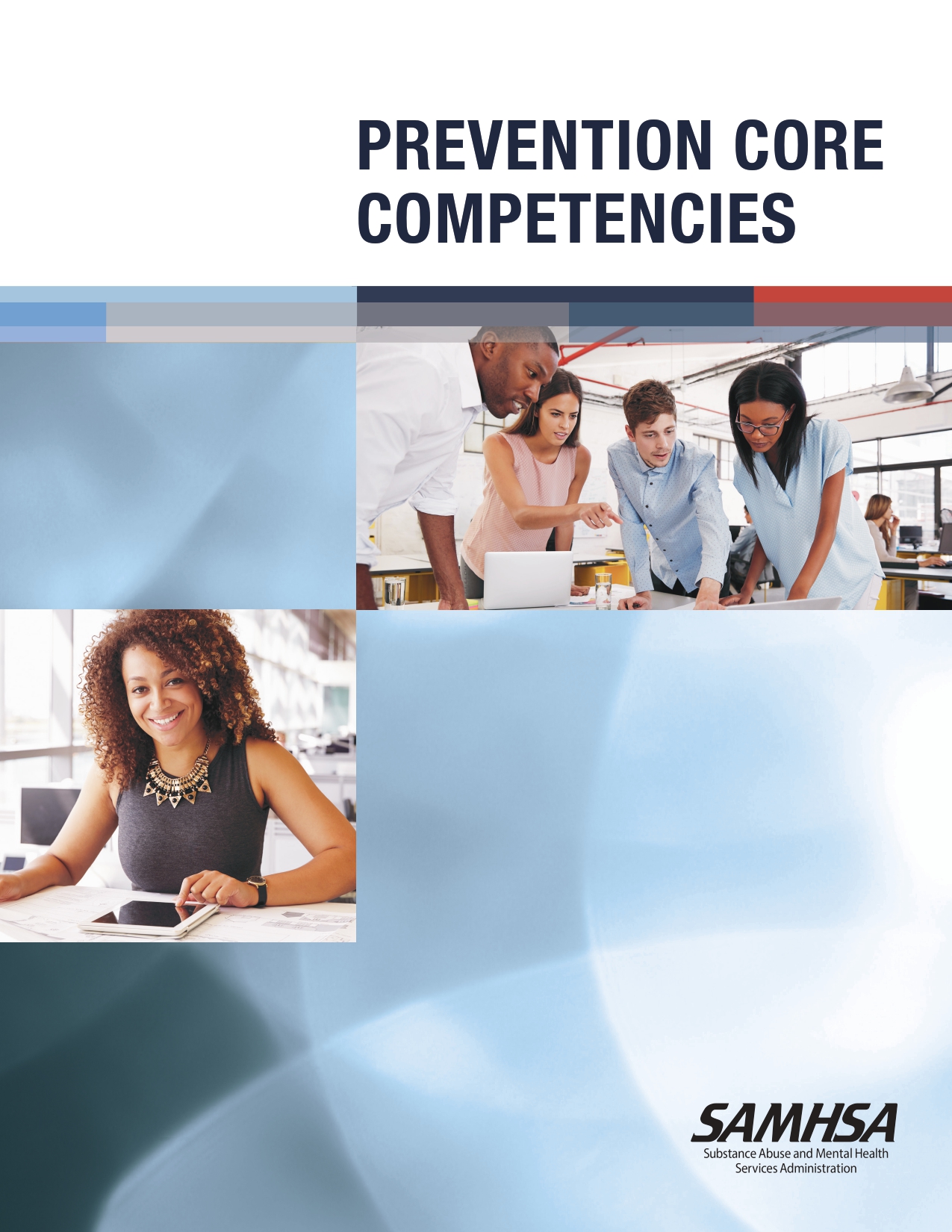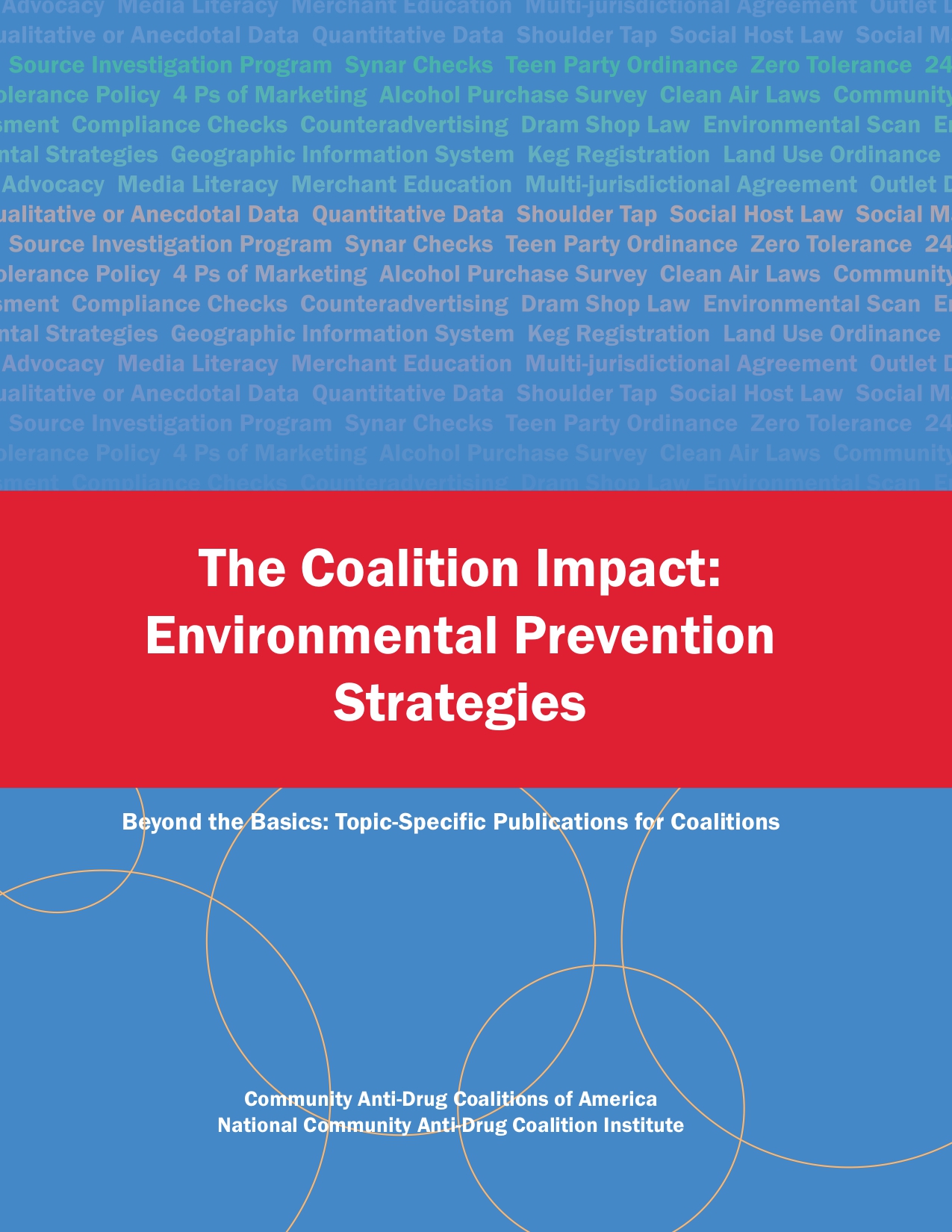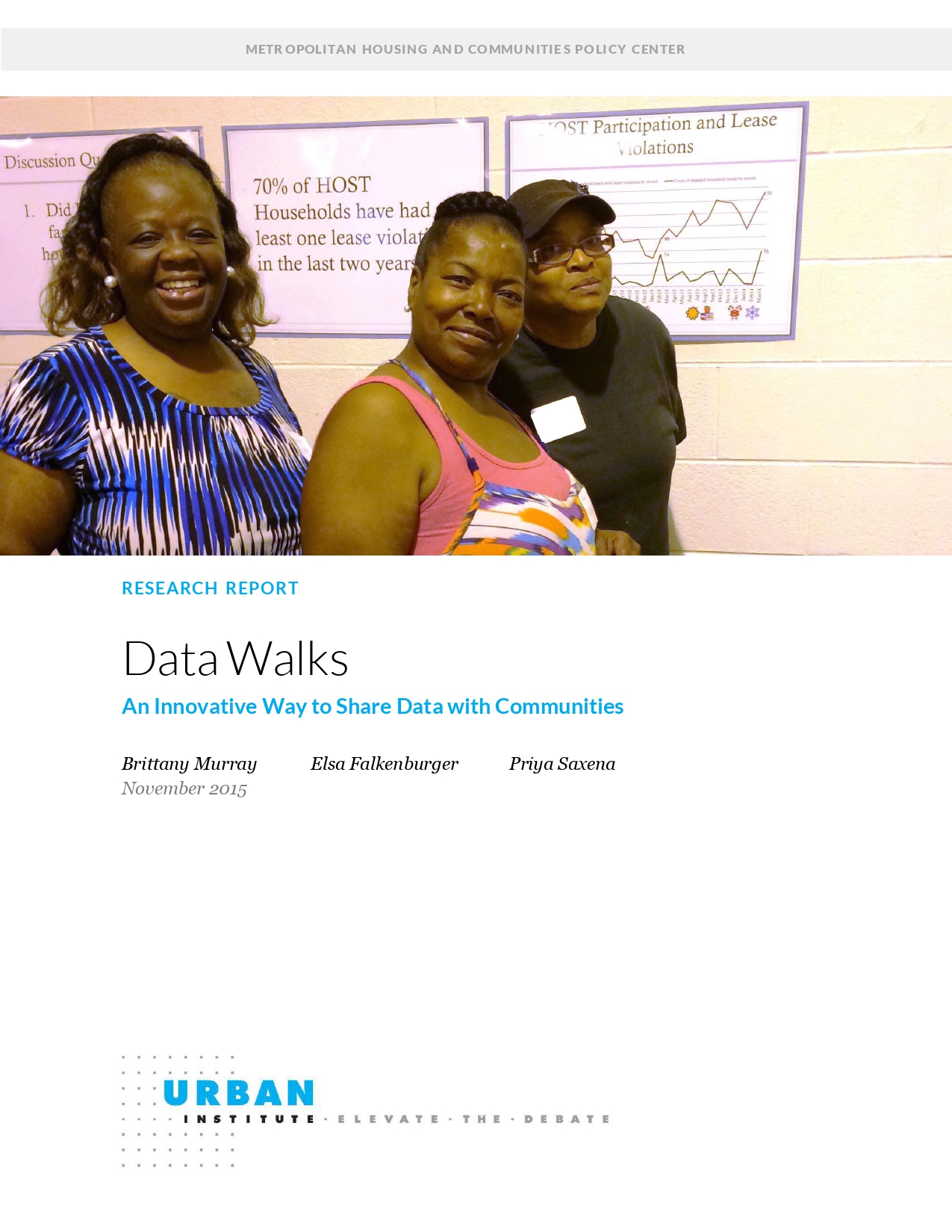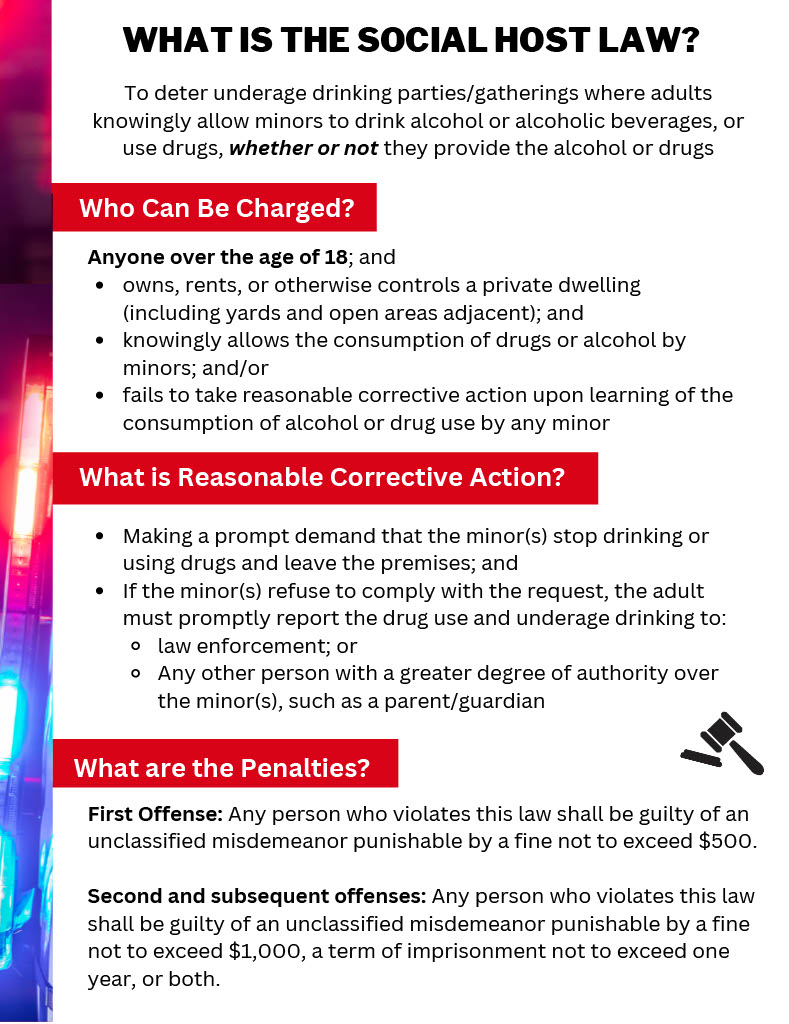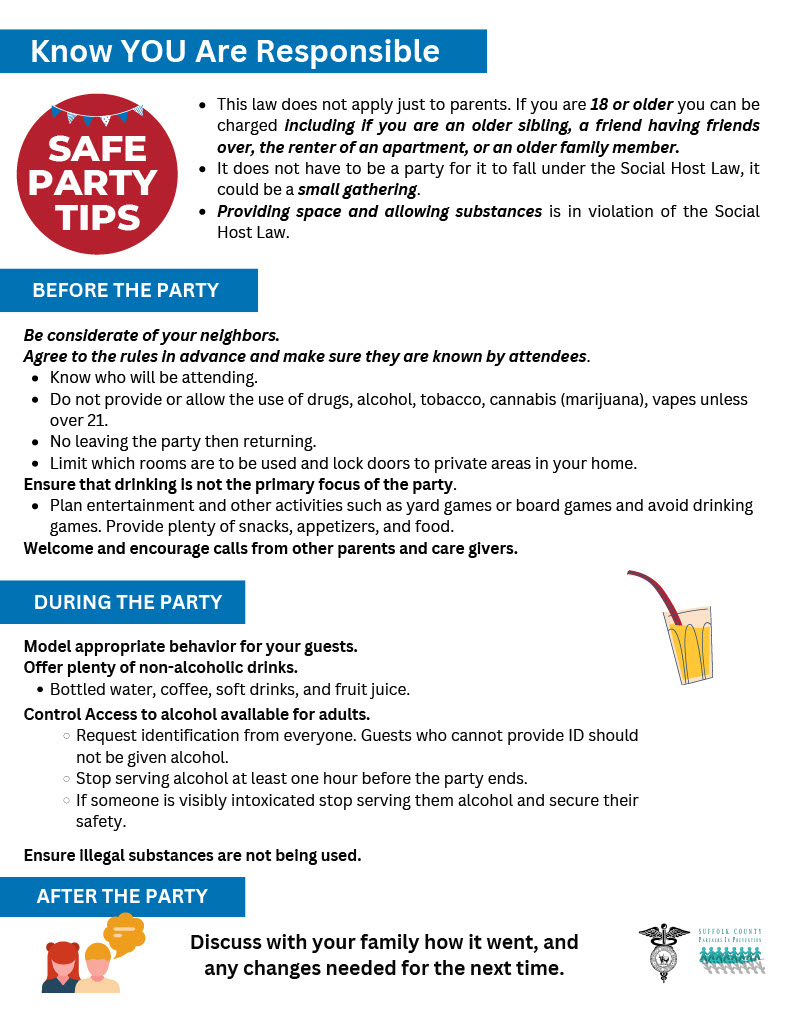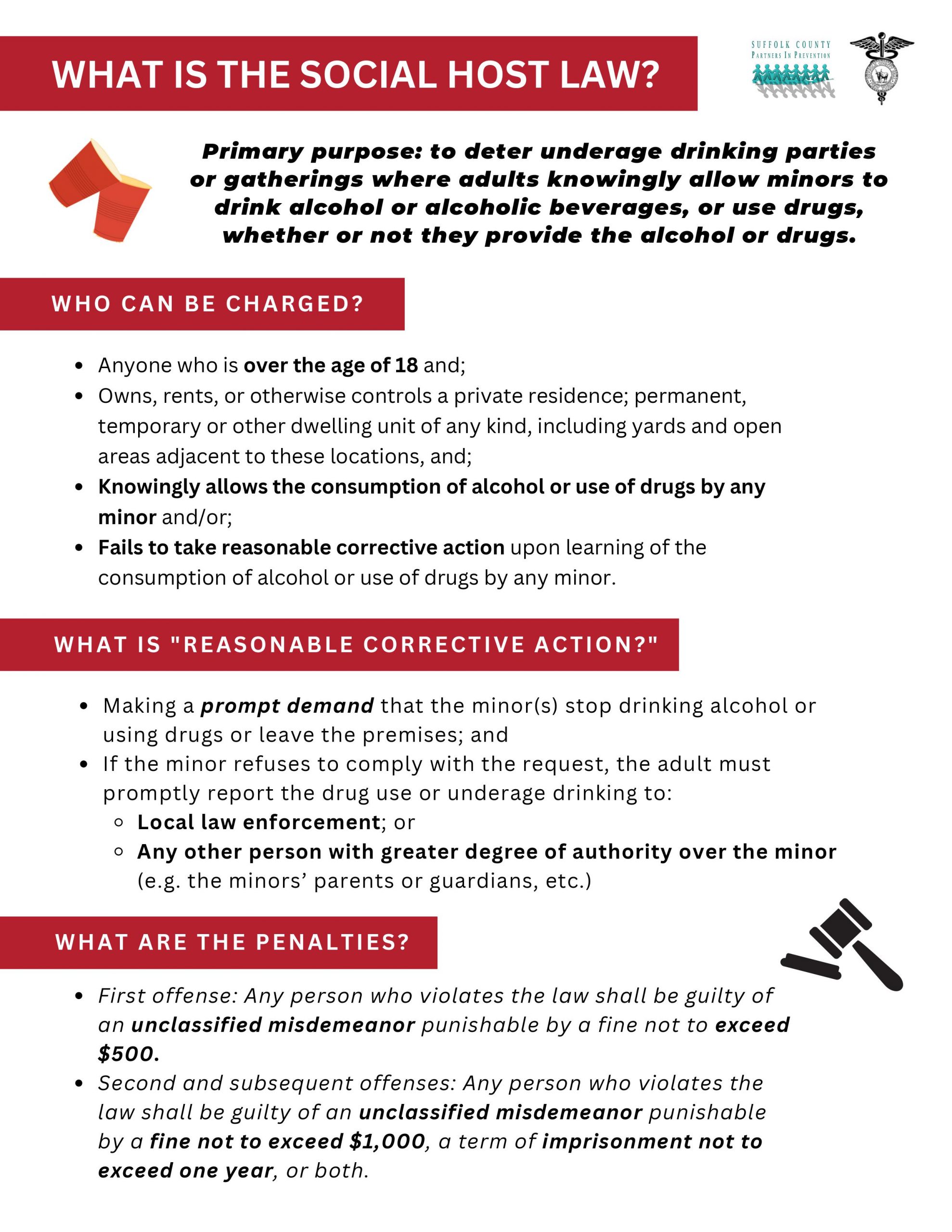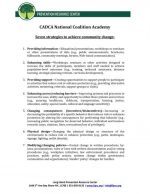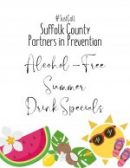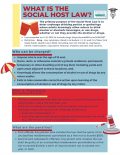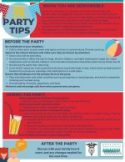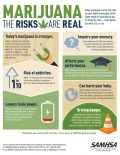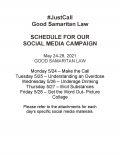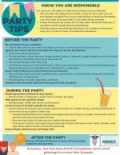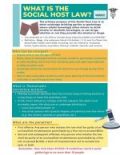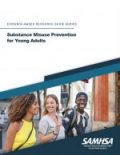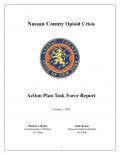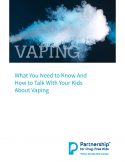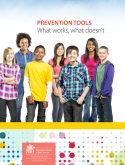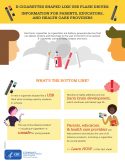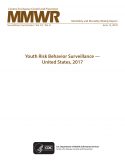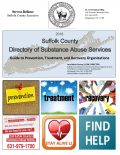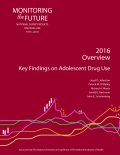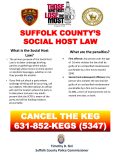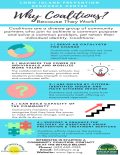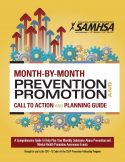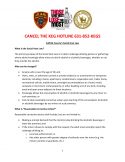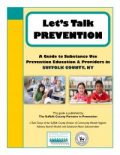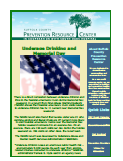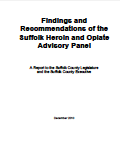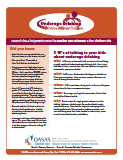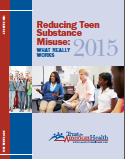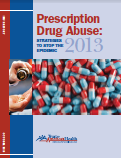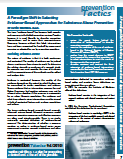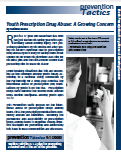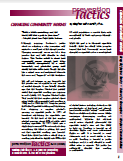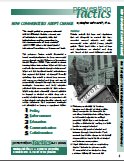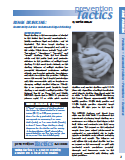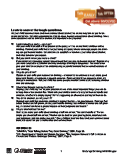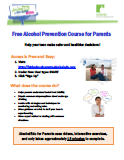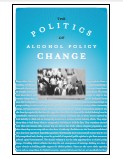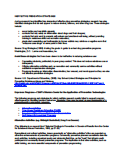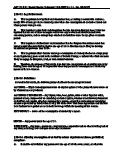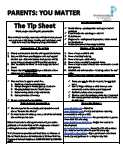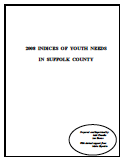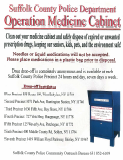Let’s Talk Prevention Guide 2024
The third edition of this guide was published in Spring 2024 by the Suffolk County Partners in Prevention; A Task Group of the Suffolk County Division of Mental Hygiene Advisory Board’s Alcohol and Substance Abuse Subcommittee. Please use this guide to learn about the field of substance use prevention, and to discover ways you can incorporate effective prevention strategies into the work you do! Includes materials for schools, communities, parents/guardians, first responders, treatment/recovery/harm reduction, and more!
Let’s Talk Prevention Guide 2021
The second edition of this guide was published in Summer 2021 by the Suffolk County Partners in Prevention; A Task Group of the Suffolk County Division of Mental Hygiene Advisory Board’s Alcohol and Substance Abuse Subcommittee. Please use this guide to learn about the field of substance abuse prevention, and to discover ways you cab incorporate effective prevention strategies into the work you do! Includes materials for schools, communities, parents/guardians, coalitions, and more!
Telling the Coalition Story: Comprehensive Communication Strategies (CADCA Beyond the Basics)
This is the second publication in the CADCA National Coalition Institute’s (Institute) series Beyond the Basics: Topic-Specific Publications for Coalitions. The first addressed environmental approaches to reducing substance abuse problems and incorporated seven strategies that affect community change. One of those strategies, dissemination of information to the community, is central to the success of a comprehensive approach. Communication plays a vital role—from assessment of the community’s problem to implementation of the coalition’s plan to celebrating successes and sustaining population-level change.
Sustainability Primer (CADCA)
CADCA’s National Coalition Institute, developed in 2002 by an Act of Congress, serves as a center for training, technical assistance, evaluation, research, and capacity building for community substance misuse coalitions throughout the United States. The Institute developed these primers to serve as a guideline for coalitions navigating the U.S. Department of Health and Human Services Administration (SAMHSA)’s Strategic Prevent Framework (SPF). These primers highlight the CADCA model of prevention and its applied uses to the SPF. Each primer is designed to stand alone and work with others in the series. This primer builds on others in the series by laying out a framework and describing key considerations and action steps for coalitions to include in their journey to sustainability.
Substance Use Prevention Communications Toolkit- Youth 12 to 18
Evidence-informed guidance for creating, delivering, and disseminating messages to prevent the onset or escalation of substance muse in youth and build community support and readiness for substance use prevention.
PREVENTION CORE COMPETENCIES
It is anticipated that these prevention core competencies and KSAs will offer professional
direction to the prevention field, affecting staff development and career ladders and pipelines, and providing guidance for training programs and service delivery qualification. This proposed set of professional standards may become an integral part of job descriptions, staff qualifications, and the development of transferable skills
The Coalition Impact: Environmental Prevention Strategies (CADCA Beyond the Basics)
This is the first in a new series—Beyond the Basics: Topic-Specific Publications for Coalitions—that work in conjunction with the Primer Series. They are meant to assist coalitions expand their knowledge about planning for population-level change. As is true with the primers, they work
as a set, however, each also can stand alone.
This publication provides an overview of the environmental strategies approach to community
problem solving. It includes real examples of efforts where environmental strategies aimed at
preventing and reducing community problems related to alcohol and other drugs were implemented. No one approach or set of strategies will fix every community problem, but with an appropriate environmental assessment, a coalition can determine what aspects of environmental prevention will best serve their community.
Data Walks An Innovative Way to Share Data with Communities
“Engaging the community as a research partner is something the public health field has been championing for years through its community-based participatory research model, which often involves residents in defining research agendas, research design, data collection, and developing and testing interventions for their own communities. We have developed a tool we call a Data Walk as a means of sharing data and research findings with stakeholders. This guidebook draws on our experiences with two place-based projects where we have seen Data Walks spur dialogue between community stakeholders who used data as the anchor to ground conversations around solving neighborhood problems.”- From the Urban Institute
Spring 2023 #JustCall Partners in Prevention Palm Card
This palm card was created in connection with the Partners in Prevention Spring 2023 #JustCall Campaign and outlines both the social host law and best practices for hosting a safe party where alcohol and substances are not the focus. You are welcome to use these palm cards throughout the campaign and beyond in whatever way you would like.
Spring 2023 Partners in Prevention #JustCall Safe Party Tips Flyer
This Flyer was created in connection with the Partners in Prevention Spring 2023 #JustCall Campaign and outlines best practices for hosting a safe party where alcohol and substances are not the focus. You are welcome to use these flyers throughout the campaign and beyond in whatever way you would like.
Spring 2023 #JustCall Partners in Prevention Social Host Law Flyer
This Flyer was created in connection with the Partners in Prevention Spring 2023 #JustCall Campaign and outlines the Social Host Law in easy to understand language. You are welcome to use these flyers throughout the campaign and beyond in whatever way you would like.
Seven Strategies for Community Change
The Seven Strategies for Community Change is an effective approach to selecting and implementing substance misuse prevention strategies that impact individuals, schools, families, and communities.
#JustCall Partners in Prevention: Summer Drink Specials (Non Alcoholic Drinks)
This PDF booklet offers a variety of non alcohol summer drink specials that would be great at any gathering, party or BBQ. This is to be used during Week 5, June 14th or 15th , of the Summer 2022 #JustCall Campaign with Partners in Prevention. You are welcome to also use these flyers in whatever way you would like during or after the campaign.
The primary purpose of the Social Host Law is to deter underage drinking parties or gatherings where adults knowingly allow minors to drink alcohol or alcoholic beverages, or use drugs, whether or not they provide the alcohol or drugs.
#JustCall Partners in Prevention: What is the Social Host Law?
This PDF flyer is to be used during Week 2, May 24th and 25th, of the Summer 2022 #JustCall Campaign with Partners in Prevention. The JPG (Image) version can be found in the campaign files drive. You are welcome to also use these flyers in whatever way you would like during or after the campaign.
The primary purpose of the Social Host Law is to deter underage drinking parties or gatherings where adults knowingly allow minors to drink alcohol or alcoholic beverages, or use drugs, whether or not they provide the alcohol or drugs.
#JustCall Partners in Prevention: Healthy Summer Party Tips
This PDF flyer is to be used during Week 5, June 14th or 15th , of the Summer 2022 #JustCall Campaign with Partners in Prevention. The JPG (Image) version can be found in the campaign files drive. You are welcome to also use these flyers in whatever way you would like during or after the campaign.
The primary purpose of the Social Host Law is to deter underage drinking parties or gatherings where adults knowingly allow minors to drink alcohol or alcoholic beverages, or use drugs, whether or not they provide the alcohol or drugs.
Marijuana: The Risks are Real
Using marijuana carries real risks for your health and quality of life. Some might be surprising to you. So know the risks — learn before you burn, eat, or use.
#JustCall Partners in Prevention: FAQs about the Good Samaritan Law
This PDF flyer is to be used during the #JustCall Good Samaritan Law Campaign with Partners in Prevention happening May 24th -28th 2021.
The Good Samaritan Law was created to encourage people to call 911 to report an overdose without fear of arrest or other legal consequences. The law empowers you to save someone’s life. The overdose victim is also protected. The flyer answers frequent asked questions about the law.
#JustCall Partners in Prevention: Healthy Party Tips
This PDF flyer is to be used during Day 2, Friday November 20th, of the November 2020 #JustCall Campaign with Partners in Prevention. The JPG (Image) version can be found in the campaign files drive.
Know you are responsible. It is up to you, the adult, to make sure all these rules are followed. This flyer provides you with best strategies for hosting a healthy party.
#JustCall Partners in Prevention: What is the Social Host Law?
This PDF flyer is to be used during Day 1, Thursday November 19th, of the November 2020 #JustCall Campaign with Partners in Prevention. The JPG (Image) version can be found in the campaign files drive.
The primary purpose of the Social Host Law is to deter underage drinking parties or gatherings where adults knowingly allow minors to drink alcohol or alcoholic beverages, or use drugs, whether or not they provide the alcohol or drugs.
Substance Misuse Prevention for Young Adults (SAMHSA Evidence-Based Resource Guide Series)
This guide discusses effective prevention practices to mitigate risk factors associated with substance misuse and promote protective factors among: all young adults generally; young adults at significantly higher risk for substance misuse; and young adults who are not diagnosed with a SUD but are engaging in substance misuse.
Nassau County Opioid Crisis Action Plan Task Force Report
Each day, approximately 130 Americans lose their lives to an opioid overdose. The cost of the opioid crisis has not just been lives lost – families, communities, and the nation are grappling with the magnitude of its scope, adverse outcomes, and enduring effects. As the opioid crisis has evolved, strategies to combat its effects must evolve as well. Through a multifaceted and collaborative approach which incorporates data driven decision making, enforcement, and evidence-based prevention and treatment programs, Nassau County can effectively address the opioid epidemic and enhance the road to recovery. This report, published on October 3rd 2019, outlines these current efforts and changes that have occurred.
What You Need to Know & How to Talk With Your Kids about Vaping
This comprehensive resource from the Partnership for Drug-Free Kids will explain the culture of vaping, what the current research says, and how to have difficult conversations about vaping or juuling with your child.
2016-2017 National Pride Survey for Grades 6 Thru 12
Since 1982, the Pride Survey has been used by schools, school systems, communities, and states, to gather data on student drug and alcohol use. The Pride Questionnaire for Grades 6-12 has been utilized by thousands of school systems across the United States, as well as in six other countries. This document is the full report for years 2016-2017.
Prevention Tools: What works, what doesn’t
Knowing what works in prevention, and what doesn’t, is vital to keeping young people from developing serious and life-long issues with addiction, as alcohol and other drug abuse remain the problem behaviors contributing to the most serious problems facing our communities today. In fact, the National Center on Addiction and Substance Abuse estimates the U.S. spends more than half a trillion dollars each year responding to the consequences of substance abuse and addiction.
As prevention professionals and the stewards of our field, we know good intentions are not good enough for selecting and implementing prevention strategies. We are ethically obligated to use the knowledge of what works if we want to protect students from initiating drug use or developing addiction.
E-Cigarettes: Information for Parents, Educators, and Health Care Providers
Electronic cigarettes (e-cigarettes) are battery-powered devices that can deliver nicotine and flavorings to the use in the form of an aerosol. E-cigarettes can come in many shapes and sizes.
What’s the bottom line?
Youth Risk Behavior Surveillance System— United States, 2017
Health-risk behaviors contribute to the leading causes of morbidity and mortality among youth and adults in the United States. In addition, significant health disparities exist among demographic subgroups of youth defined by sex, race/ethnicity, and grade in school and between sexual minority and nonsexual minority youth. Population-based data on the most important health-related behaviors at the national, state, and local levels can be used to help monitor the effectiveness of public health interventions designed to protect and promote the health of youth at the national, state, and local levels. This document contains the full results from the 2017 Youth Risk Behavior Surveillance System.
2018 Suffolk County Directory of Substance Abuse Services
This is a comprehensive directory of substance abuse prevention, education, treatment and recovery services in Suffolk County. The directory is the result of efforts of the Suffolk County Drug & Alcohol Subcommittee Prevention Task Group, in collaboration with The Communities of Solution, and the Quality Consortium of Suffolk County.
The September 2016 Report to Congress on the Prevention and Reduction of Underage Drinking
This document is excerpted from: The September 2016 Report to Congress on the Prevention and Reduction of Underage Drinking and is the report for New York State.
2016 National Survey on Drug Use and Health
This national report summarizes the key substance use and mental health findings among people aged 12 years old and older in the United States who completed the 2016 National Survey on Drug Use and Health (NSDUH).
2016 Monitoring the Future Key Findings on Adolescent Drug Use
Monitoring The Future (MTF) is a long-term study of American adolescents, college students, and adult high school graduates through age 55 since 1975. The 2016 MTF survey involved about 45,500 students in 8th, 10th, and 12th grades enrolled in 372 secondary schools nationwide. The results in this report look at lifetime, annual, 30 day, and daily prevalence for grade levels and drug classes.
2015-2016 National Pride Survey Results for Grades 6 Thru 12
Since 1982, the Pride Survey has been used by schools, school systems, communities, and states, to gather data on student drug and alcohol use. The Pride Questionnaire for Grades 6-12 has been utilized by thousands of school systems across the United States, as well as in six other countries. This document is the full report for years 2015-2016.
Suffolk County Social Host Law 2017
This revised Fall 2017 flier from Suffolk County Police Commissioner Timothy Sini describes the Social Host Law and the resulting penalties. At the bottom you’ll find the Cancel the Keg hotline number, where you can report upcoming parties that may be serving to underage youth.
Nassau County Youth Development Survey (YDS) 2014-2015 Quicklook
This document outlines some of the key findings from Nassau County’s 2014-2015 Youth Development Survey including highest risk factor, lowest protective factor, age of first use of various drugs and alcohol, sources of alcohol, and binge drinking rates. This was developed by the Long Island Prevention Resource Center.
Suffolk County Youth Development Survey (YDS) 2014-2015 Quicklook
This document outlines some of the key findings from Suffolk County’s 2014-2015 Youth Development Survey including highest risk factor, lowest protective factor, age of first use of various drugs and alcohol, sources of alcohol, and binge drinking rates. This was developed by the Long Island Prevention Resource Center.
Nassau County Youth Development Survey (YDS) Report 2014-2105
This report summarizes findings from the Nassau County Youth Development Survey conducted during the 2014-2015 school year. The survey instrument was designed to assess risk and protective factors that predict substance use and other problem behaviors such as delinquency. The survey also measures substance use, youth gambling and other problem behaviors. In addition, grade groups and gender comparisons often are provided as well.
Suffolk County Youth Development Survey (YDS) Report 2014-2015
This report summarizes findings from the Suffolk County Youth Development Survey conducted during the 2014-2015 school year. The survey instrument was designed to assess risk and protective factors that predict substance use and other problem behaviors such as delinquency. The survey also measures substance use, youth gambling and other problem behaviors. In addition, grade groups and gender comparisons often are provided as well.
Why Coalitions Infographic
Why coalitions? Because they work! Coalitions are a diverse group of community partners who join to achieve a common purpose and solve a common problem, yet retain their individual identity.
SAMSHA’S Month by Month Prevention and Promotion Planning Guide
A Comprehensive guide to help plan monthly substance abuse prevention and mental health promotion awareness events. Brought to you by the 2011-13 Cohort of Center for Substance Abuse Prevention Fellowship Program.
Suffolk County 2016 Social Host Law and Cancel the Keg Flier
The primary purpose of the Social Host Law is to deter underage drinking parties or gatherings where adults knowingly allow minors to drink alcohol or alcoholic beverages, whether or not they provide the alcohol. If you see something say something! Help us keep our young community members safe. If you find out about a party where underage drinking will be occurring, call our CANCEL THE KEG HOTLINE at 631-852-KEGS.
Let’s Talk Prevention Guide 2016
The first edition of this guide was published in September 2016 by the Suffolk County Partners in Prevention; A Task Group of the Suffolk County Division of Mental Hygiene Advisory Board’s Alcohol and Substance Abuse Subcommittee. Please use this guide to learn about the field of substance abuse prevention, and to discover ways you cab incorporate effective prevention strategies into the work you do! Includes materials for schools, communities, parents/guardians, coalitions, and more!
May 2012 Newsletter-Chatting up summer safety with Teens
May 2012 Newsletter-Chatting up summer safety with Teens
Suffolk County’s HOEAP Report
Findings and Recommendations of the Suffolk Heroin and Opiate Advisory Panel
The Panel, comprised of the treatment professionals, prevention experts, school officials and health care professionals listed below, was charged with making recommendations about ways in which Suffolk County can “improve its response to heroin and opiates,” in terms of prevention, treatment and recovery support.
EUDL Parent Handout
Underage Drinking..Not a Minor Problem
Talking to your child about underage drinking can be difficult.
Here are some tips to help get the conversation started…
Medicine Cabinet Safety Brochure
Most people take prescription medication responsibly under a doctor’s care. However, there has been a steady increase in the non-medical use of these medications, especially by teenagers. Part of the problem is the availability of medications (over-the-counter and prescription) in the family medicine cabinet which can provide easy access to children, adults, elderly and visitors. People often mistakenly believe that these medications are safe because they are approved by the FDA and prescribed by a physician. Nonmedical use of certain prescription drugs can lead to addiction.
Problem Gambling
For most people, gambling is a fun, recreational activity. But for some adults, gambling behaviors will become a problem that negatively affects many areas of their life.
Prescription Drug Use Brochure
Prescription drug misuse is the use of prescription medication in a manner that is not prescribed by a health care practitioner. This includes using someone else’s prescription or using your own prescription in a way not directed by your doctor.
Reducing Teen Substance Misuse: What Really Works
The report includes state-by-state youth drug overdose death rates and rankings, and a report card for how well states scored on 10 key indicators of leading evidence-based policies and programs that can improve the wellbeing of children and youth and have been connected with preventing and reducing substance – alcohol, tobacco or other drugs – misuse. The report is supported by a grant from the Conrad Hilton Foundation.
Prescription Drug Abuse: Strategies to stop the epidemic (2013)
Prescription drug abuse has quickly become a major health epidemic in the United States. This guide looks at key findings regarding the magnitude of prescription drug abuse in the US, the public health model as it relates to this issue, different methods that can be utilized at the state and national level to address prescription drug abuse, and key areas of concern and recommendation.
Prevention Tactics – Evidence-Based Approaches for Substance Abuse Prevention
A Paradigm Shift in Selecting Evidence-Based Approaches for Substance Abuse Prevention
This Prevention Tactic will:
• review the recent history behind the designation of “evidence-based” to describe prevention approaches;
• review the recent history behind the designation of “evidence-based” to describe prevention approaches;
• examine the evolution of the use of “evidence-based” in the National Registry of Effective Programs & Practices (NREPP);
• explore how the recent changes to NREPP have impacted the process that providers use to select interventions to meet the needs of the community they serve; and
• describe, compare, and contrast the three categories of evidence-based interventions required by the Strategic Prevention Frame
Prevention Tactics – Youth Prescription Drug Abuse
Youth Prescription Drug Abuse: A Growing Concern
This Prevention Tactic focuses on the intentional abuse of prescription drugs among teens. First, the prescription medications commonly abused are identified. Secondly, the prevalence and accessibility of prescription drugs among teens is explored. Finally, effective strategies for preventing and addressing this issue in local communities are discussed.
Prevention Tactics – Changing Community Norms
This Tactics article is about how community norms change, how ideas are initially championed by a small, innovative, and persistent group until slowly the idea takes hold.
Prevention Tactics – How Communities Adopt Change
This article is about turning ideas into action. What are the nuts and bolts that constitute change mechanisms?
Prevention Tactics – Binge Drinking
Binge Drinking: Community Action to Reduce Binge Drinking
Binge drinking is the consumption of alcohol to the extent that harmful consequences – health, academic, legal, and others – may be expected.
National Pride Survey 2008-2009
Since 1982, the PRIDE Survey has been used by schools, school systems, communities, and states, to gather data on student drug and alcohol use. In recent years, questions on violence and threatening behaviors have been added.
Conversation Starters
Learn to answer the tough questions.
As your child becomes more and more curious about alcohol, he or she may turn to you for answers and advice. Use this opportunity to start an open, honest conversation about drinking. Since some questions can be difficult to answer, it’s important to be prepared.
2010-2011 Nassau County YDS
This report summarizes findings from the New York State Youth Development Survey conducted during the 2010-11 school year. The survey instrument was designed to assess risk and protective factors that predict substance use and other problem behaviors such as delinquency. The survey also measures substance use, youth gambling and other problem behaviors. In addition, grade groups and gender comparisons often are provided as well.
2010-2011 Suffolk County YDS
This report summarizes findings from the New York State Youth Development Survey conducted during the 2010-11 school year. The survey instrument was designed to assess risk and protective factors that predict substance use and other problem behaviors such as delinquency. The survey also measures substance use, youth gambling and other problem behaviors. In addition, grade groups and gender comparisons often are provided as well.
2010 Partnership Attitude Tracking Study – Teens and Parents
Following a decade of steady declines, The Partnership Attitude Tracking Study (PATS), sponsored by MetLife Foundation indicates that teen drug and alcohol use is headed in the wrong direction, with marked increases in teen use of marijuana and Ecstasy over the past three years.
Alcohol Education for Parents
-
Helps parents understand Social Host Liability.
-
Dispels common misperceptions about underage drinking.
-
Assists with strategies and techniques for monitoring and setting rules.
-
Gives guidance on what to do if your teen is experimenting.
-
Gives expert advice for dealing with common situations.
The Politics of Alcohol Policy Change
It is already evident, based both on research and experience, that alcohol policies have enormous potential to reduce and prevent underage drinking. There is now a body of knowledge and experience to suggest that coalitions working for alcohol policy change can accomplish the goal of passing policy. Experience also suggests that coalitions can be most effective if they work strategically and become adept at managing the political process inherent in community and social change.
Ineffective Prevention Strategies
Ineffective Prevention Strategies
Suffolk County Social Host Law
Suffolk County Social Host Law
PYM Audience Tip Sheet
Parents: You Matter
2008 Indices of Youth Needs in Suffolk County
The Indices of Youth Needs in Suffolk County is prepared by the Suffolk County Youth Bureau to assist persons who plan, develop and provide youth services and who seek funding for youth services. The report presents officials statistics provided by county and state agencies. The most recent data available have been included, primarily 2003-2007 statistics.
Suffolk County Police Department Operation Medicine Cabinet
Suffolk County Police Department Operation Medicine Cabinet Drop Off Locations




